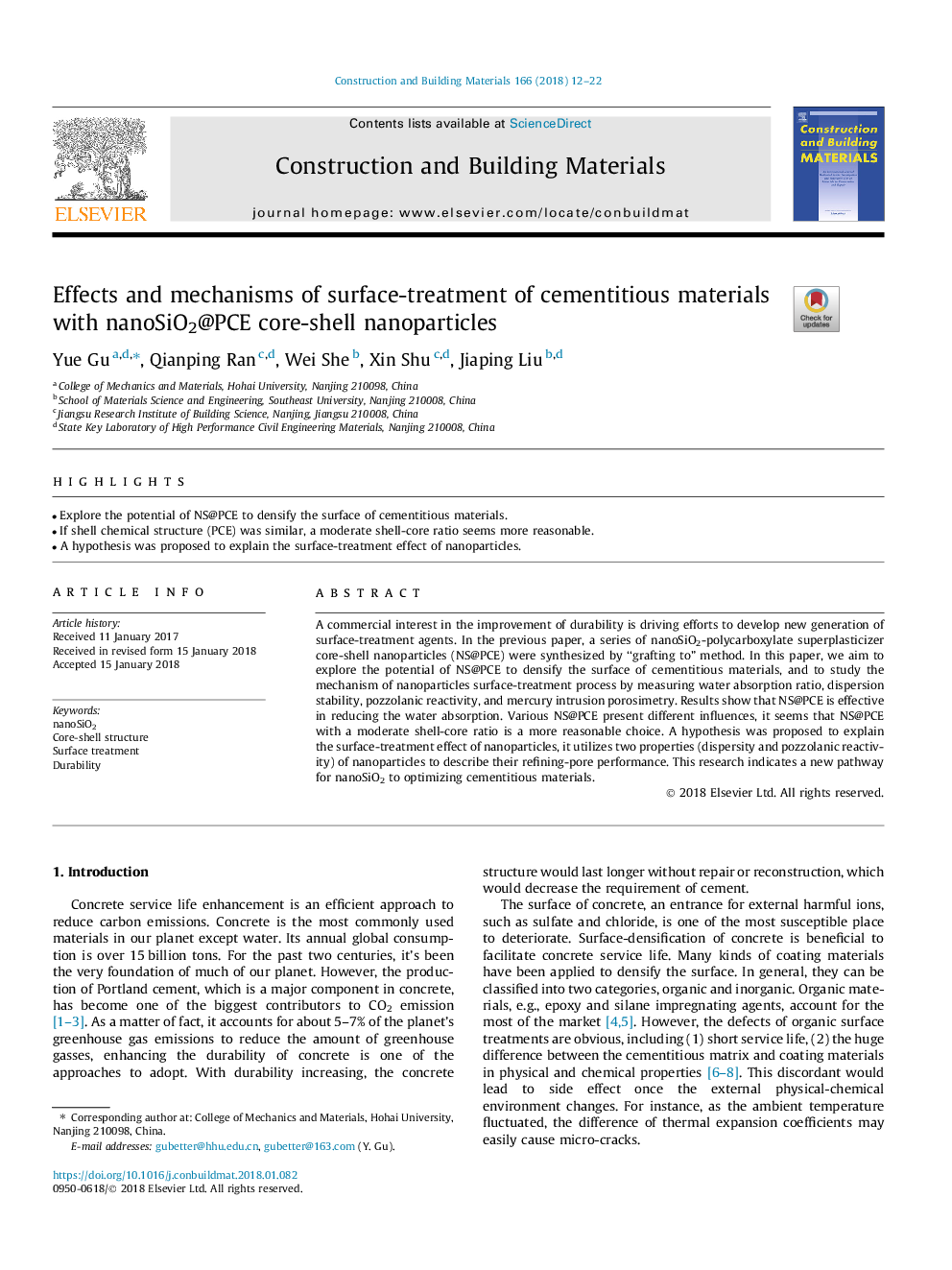| Article ID | Journal | Published Year | Pages | File Type |
|---|---|---|---|---|
| 6715147 | Construction and Building Materials | 2018 | 11 Pages |
Abstract
A commercial interest in the improvement of durability is driving efforts to develop new generation of surface-treatment agents. In the previous paper, a series of nanoSiO2-polycarboxylate superplasticizer core-shell nanoparticles (NS@PCE) were synthesized by “grafting to” method. In this paper, we aim to explore the potential of NS@PCE to densify the surface of cementitious materials, and to study the mechanism of nanoparticles surface-treatment process by measuring water absorption ratio, dispersion stability, pozzolanic reactivity, and mercury intrusion porosimetry. Results show that NS@PCE is effective in reducing the water absorption. Various NS@PCE present different influences, it seems that NS@PCE with a moderate shell-core ratio is a more reasonable choice. A hypothesis was proposed to explain the surface-treatment effect of nanoparticles, it utilizes two properties (dispersity and pozzolanic reactivity) of nanoparticles to describe their refining-pore performance. This research indicates a new pathway for nanoSiO2 to optimizing cementitious materials.
Related Topics
Physical Sciences and Engineering
Engineering
Civil and Structural Engineering
Authors
Yue Gu, Qianping Ran, Wei She, Xin Shu, Jiaping Liu,
